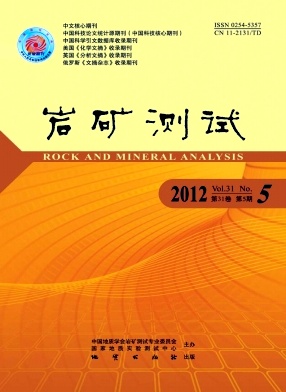YANG Fu-quan, GUO Xu-ji, HUANG Cheng-ke, LIU Feng, CHAI Feng-mei, GENG Xin-xia, ZHANG Bao-jiang. Metallogenesis of the Tuomoerte Fe-(Mn) Deposit in Altay, Xinjiang[J]. Rock and Mineral Analysis, 2012, 31(5): 906-914.
| Citation: |
YANG Fu-quan, GUO Xu-ji, HUANG Cheng-ke, LIU Feng, CHAI Feng-mei, GENG Xin-xia, ZHANG Bao-jiang. Metallogenesis of the Tuomoerte Fe-(Mn) Deposit in Altay, Xinjiang[J]. Rock and Mineral Analysis, 2012, 31(5): 906-914.
|
Metallogenesis of the Tuomoerte Fe-(Mn) Deposit in Altay, Xinjiang
-
1.
Key Laboratory of Metallogeny and Mineral Assessment, Ministry of Land and Resources, Institute of Mineral Resources, Chinese Academy of Geological Sciences, Beijing 100037, China
-
2.
No.706 Geological Team, Xinjiang Nonferrous Geoexploration Bureau, Altay 836500, China
-
3.
No.706 Geological Team, Xinjiang Nonferrous Geoexploration Bureau, Altay 836500, China
-
4.
Key Laboratory of Metallogeny and Mineral Assessment, Ministry of Land and Resources, Institute of Mineral Resources, Chinese Academy of Geological Sciences, Beijing 100037, China
-
5.
Xinjiang Key Laboratory for Geodynamic Processes and Metallogenic Prognosis of the Central Asian Orogenic Belt, Xinjiang University, Urumqi 830046, China
-
6.
Key Laboratory of Metallogeny and Mineral Assessment, Ministry of Land and Resources, Institute of Mineral Resources, Chinese Academy of Geological Sciences, Beijing 100037, China
-
7.
No.4 Hydrogeological Party of the Hebei Bureau of Geology, Cangzhou 061000, China
-
Abstract
The Tuomoerte medium type iron deposit can be found in the metavolcanic-sedimentary sequence of the upper Kangbutiebao Formation from the Upper Silurian to Lower Devonian. The source of ore materials, mineralogenetic epoch and metallogenesis were studied by S stable isotope and geochronology and are reported in this paper. Three periods of mineralization can be distinguished on the basis of field evidence and petrographic analyses: volcano-sedimentation, magmatic-hydrothermal, and regional metamorphism. The majority of the Fe-Mn metallogenic activity occurred during the volcano-sedimentation period, some Fe and the majority of Cu mineralization occurred during the magmatic-hydrothermal period. The δ34S values of pyrite from the volcano-sedimentation period ranged from 6.2‰ to 13.1‰ and -20‰, indicating that the sulfur was mainly derived from the volcanic rocks, with some minor contributions from the bacteria-reduced sulphate in the seawater. The δ34S values of pyrite from the magmatic-hydrothermal period ranged from -1.8‰ to 8.5‰ and cluster between -1.8‰ to 3.8‰, indicating that the sulfur was mainly derived from the biotite granite porphyry dyke. The zircon U-Pb age by Laser Ablation-Multicollector Inductively Coupled Plasma-Mass Spectrometry (LA-MC-ICP-MS) of the meta-rhyolite of the Third Member of upper Kangbutiebao Fm is (406.7±4.3) Ma, and the age of biotite granite porphyry dyke, which intrude into Fe orebody, is (401.6±0.6) Ma. The zircon U-Pb ages indicate that the Fe-Mn mineralization period during the volcano-sedimentation and magmatic-hydrothermal periods coincides with early Devonian timing (401-407 Ma). The Fe-Mn and Fe-Cu mineralization were found to be related to volcanic eruption deposition and magma intrusion activities, respectively.
-

-
-
Access History







 DownLoad:
DownLoad: